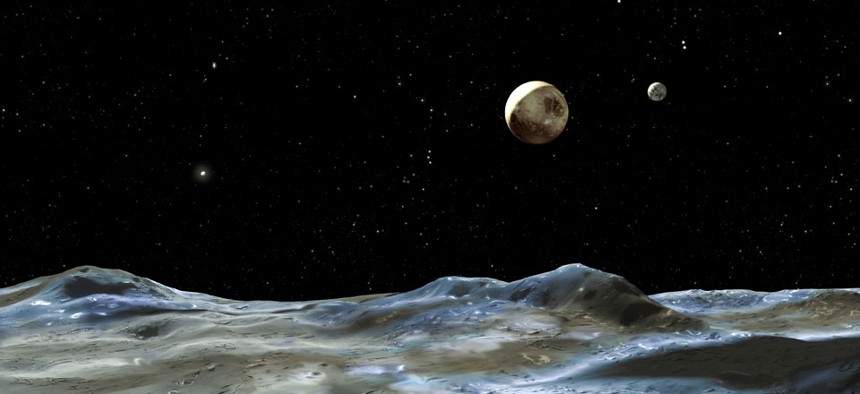NASA: Sorry, Pluto's Replacement Isn't Real

An artist's rendering of the moon system of Pluto NASA
My very educated mother just served us nine (pizzas, xylophones, never mind).
"Planet X" sounds like something from a comic book or intergalactic space opera.
It's actually a hypothetical planet scientists have used to explain a variety of astronomical events. Unfortunately, it doesn't exist.
NASA's sky-surveying spaceship has turned up all sorts of findings—but a giant gas planet out past Neptune isn't one of them, the agency announced Friday.
Since the early 20th century, scientists have used Planet X as the possible answer to unexplained events in our solar system. Mass extinctions, some said, may have been caused when this unseen planet ran through a mass of comets and redirected them toward Earth.
Others have used Planet X to explain irregular comet orbits, as well as the orbits of Uranus and Neptune. But NASA said Thursday it's found nothing larger than Saturn out to the distance of 930 billion miles. (Pluto—the original, then discounted, Planet X—is on average only 3.7 billion miles from the sun.)
NASA reached its conclusions from scanning hundreds of millions of objects spotted by WISE—a spacecraft that uses infrared light to survey the sky. The ship has found thousands of stars—including many unknown ones close to Earth, "hiding in plain sight"—as well as millions of other observations like galaxies and asteroids.
The ship was recently renamed NEOWISE and has moved into asteroid-hunter mode, helping us better track nearby flying rocks and looking for a candidate on which to land astronauts in the next decade.


